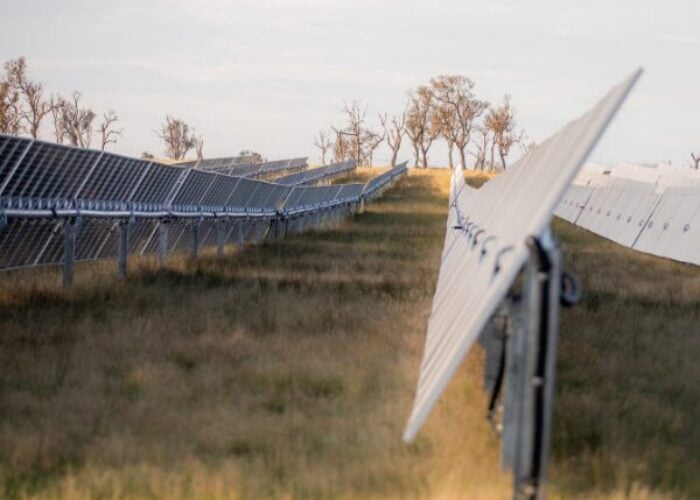Japanese telecommunications provider Softbank, which recently purchased US mobile company Sprint for US$20 billion, is considering the construction of a 40MW solar power plant in central Japan.
According to Bloomberg, several possible locations for the plant, which may begin construction in June 2014, have been considered. According to Japanese newspaper Chunichi Daily, it could be situated at a former landfill site in Hamamatsu, Shizuoka prefecture, on the western coast of Japan.
Try Premium for just $1
- Full premium access for the first month at only $1
- Converts to an annual rate after 30 days unless cancelled
- Cancel anytime during the trial period
Premium Benefits
- Expert industry analysis and interviews
- Digital access to PV Tech Power journal
- Exclusive event discounts
Or get the full Premium subscription right away
Or continue reading this article for free
Softbank also announced that a 3MW solar plant in Tochigi in the mainland area of Kanto, around 130 kilometres from Tokyo, would become operational on 23 August. It is thought to be the seventh solar plant developed by Softbank clean energy division SB Energy. In mid-July, the company opened the 2.6MW Koyagi Solar Park in Nagasaki, southern Japan.
Softbank currently operate seven solar plants in Japan. In March 2013, Softbank revealed the start of development on a vast 111MW plant in Hokkaido, the northern island of Japan where many of the recently approved Japanese ‘mega' solar projects will be located, for completion in March 2015.
On 22 August Softbank and internet services provider Yahoo Japan announced a new home energy use monitoring system for consumers, incentivised with coupons for goods and services. Yahoo Japan was itself formed as a joint venture between Softbank and the US Yahoo internet company.
Softbank chief operating officer Masayoshi Son was among the founders of the Japan Renewable Energy Foundation, which was launched in September 2011 to argue for safeguarding Japan’s energy supply with the further implementation of renewable energy, while reducing the country’s reliance on nuclear power. JREF argues that even the cost of insuring nuclear power stations against disasters on the scale of the March 2011 Fukushima tsunami and subsequent meltdown would be marginally higher than investing sufficiently into renewable energy to bring prices down.





